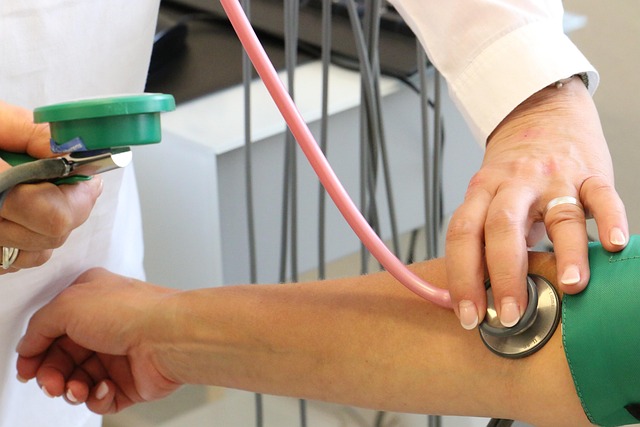Cardiac Issues: Causes, Care, and Medical Management
The heart is central to overall health, and cardiac issues range from occasional palpitations to life-threatening events such as heart attack or heart failure. Understanding common causes, how problems are assessed, and the typical paths to care helps people recognize symptoms and seek appropriate help. This article explains core cardiac conditions, when hospital evaluation is needed, what cardiology does, how healthcare systems support cardiac care, and common medical tests and treatments.

This article is for informational purposes only and should not be considered medical advice. Please consult a qualified healthcare professional for personalized guidance and treatment.
How the heart works and common heart issues
The heart is a muscular pump that circulates blood through chambers and valves to supply organs with oxygen and nutrients. Common cardiac issues include coronary artery disease (blockages that reduce blood flow), arrhythmias (irregular heart rhythms), heart failure (reduced pumping efficiency), and valvular disease (malfunctioning heart valves). Risk factors such as high blood pressure, high cholesterol, diabetes, smoking, obesity, and a family history increase the likelihood of developing these conditions. Recognizing early symptoms—chest discomfort, breathlessness, unexplained fatigue, swelling in the legs, or fainting—can prompt timely assessment and reduce complications.
When to visit a hospital for cardiac symptoms
Seek immediate hospital evaluation for sudden, severe chest pain; pressure or tightness in the chest; sudden shortness of breath; fainting or near-fainting; or new, unexplained lightheadedness accompanied by sweating or nausea. Emergency departments assess patients quickly using triage protocols, electrocardiograms (ECGs), blood tests for cardiac markers, oxygen monitoring, and imaging when needed. Rapid assessment can determine whether immediate interventions such as clot-busting medications, urgent coronary angiography, or other life-saving procedures are required. If symptoms are less severe but persistent, contact your primary care provider or cardiology clinic to arrange prompt outpatient evaluation.
What cardiology evaluates and treats
Cardiology focuses on diagnosing and managing heart and vascular conditions. Cardiologists evaluate symptoms, review risk factors, and order diagnostic tests such as ECG, echocardiography, stress testing, ambulatory rhythm monitoring, and cardiac imaging (CT or MRI) when indicated. Invasive specialists perform diagnostic or therapeutic procedures like cardiac catheterization and percutaneous coronary intervention (angioplasty). Cardiology care often involves long-term management with medications, device therapy (pacemakers, defibrillators), and coordination with cardiac surgery for cases requiring valve repair or coronary artery bypass. Treatment plans are tailored to the individual’s clinical profile and risk factors.
How healthcare systems and local services support cardiac care
Healthcare systems provide multiple layers of support for people with cardiac issues: emergency care in hospitals, outpatient cardiology clinics, primary care coordination, cardiac rehabilitation programs, and community-based prevention services. Many regions offer local services for risk assessment, smoking cessation, nutrition counseling, and supervised exercise programs, which are important for secondary prevention. Integrated care teams—including nurses, physiotherapists, pharmacists, and social workers—help patients adhere to therapies and navigate follow-up. Telehealth and remote monitoring are increasingly used to support chronic cardiac conditions, especially for patients with limited access to in-person specialist services.
Medical tests and treatments for cardiac problems
Medical assessment typically begins with noninvasive tests: ECG, blood tests (cardiac biomarkers, lipids), chest X-ray, and echocardiography. Stress testing and ambulatory rhythm monitoring help identify exertional ischemia or intermittent arrhythmias. For diagnostic clarity or intervention, coronary angiography may be performed. Common medical treatments include antiplatelet agents, statins, blood pressure medicines (beta-blockers, ACE inhibitors, ARBs), and diuretics for fluid control. Procedures range from angioplasty with stenting to coronary artery bypass grafting and valve repair or replacement. Cardiac rehabilitation and lifestyle changes (diet, exercise, smoking cessation) are essential components of recovery and long-term risk reduction.
Conclusion
Cardiac issues encompass a wide spectrum from benign palpitations to acute coronary events. Timely recognition of symptoms, appropriate use of hospital and cardiology services, coordinated healthcare support, and evidence-based medical testing and treatments together improve outcomes. Regular risk assessment and lifestyle measures remain central to preventing many cardiac conditions. For personal medical decisions and tailored treatment, consult a qualified healthcare professional.






